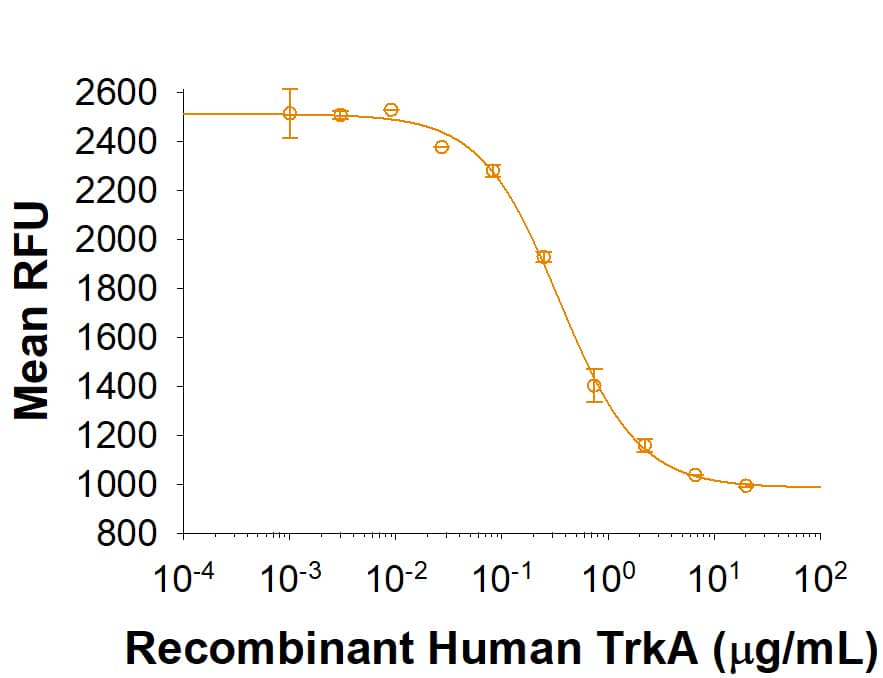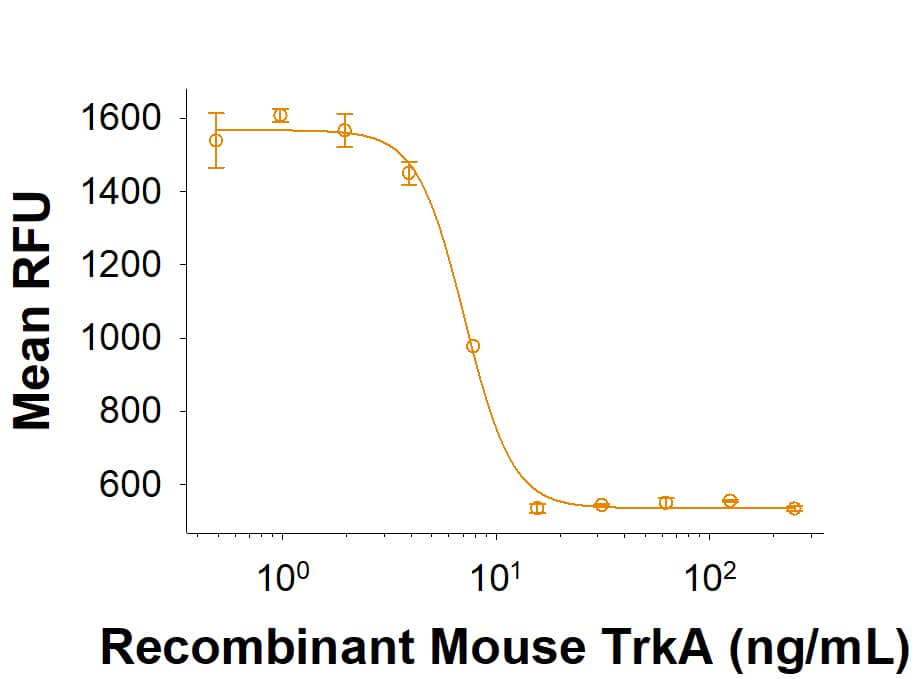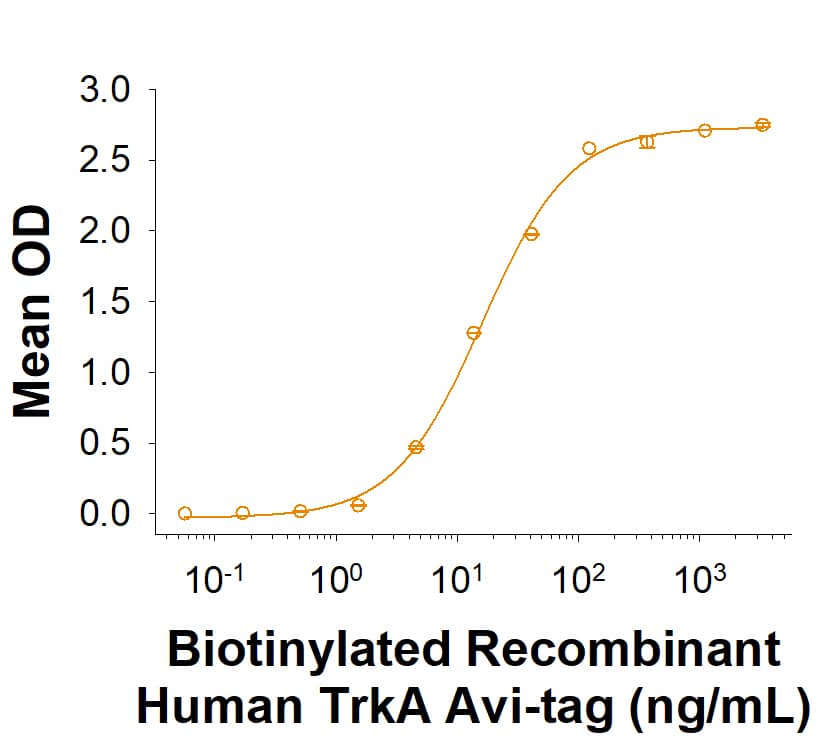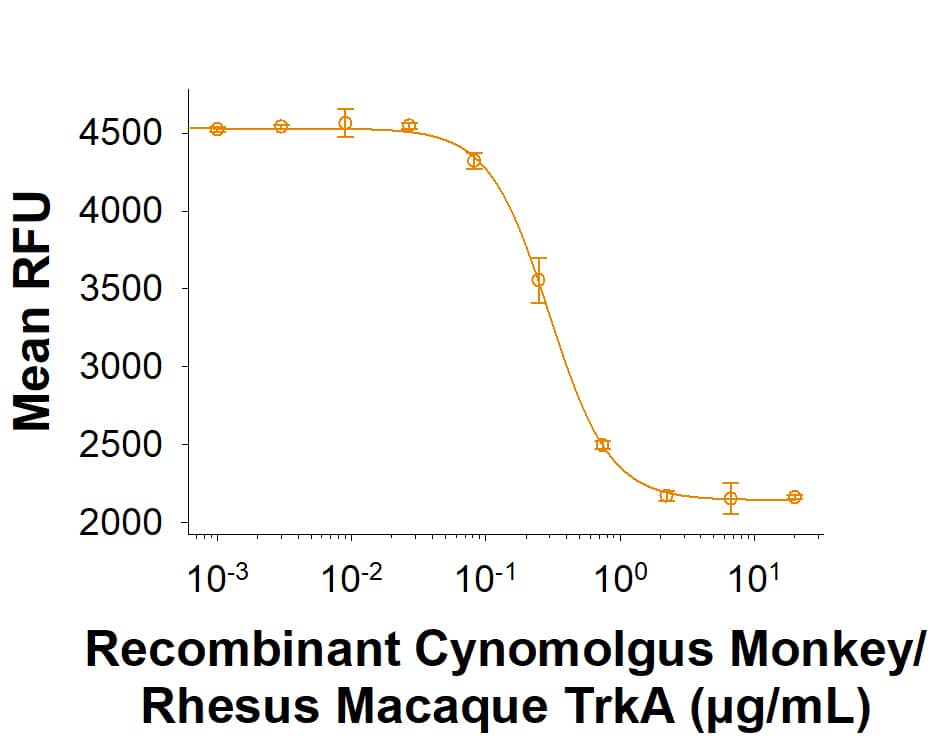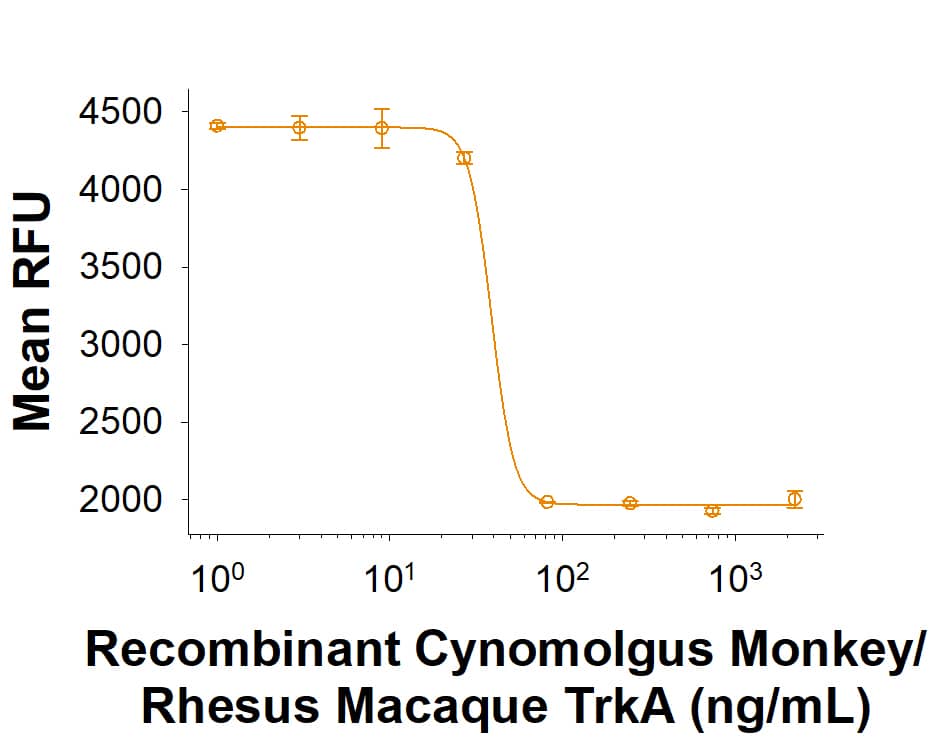TrkA: Proteins and Enzymes
TrkA, the product of the protooncogene trk, is a member of the neurotrophic tyrosine kinase receptor family that has three members. TrkA, TrkB and TrkC preferentially bind NGF, NT-4 and BDNF, and NT-3, respectively. All Trk family proteins share a conserved complex subdomain organization consisting of a signal peptide, two cysteine-rich domains, a cluster of three leucine-rich motifs, and two immunoglobulin-like domains in the extracellular region, as well as an intracellular region that contains the tyrosine kinase domain.
Two distinct TrkA isoforms that differ by virtue of a 6 amino acid insertion in their extracellular domain have been identified. The longer TrkA isoform is the only isoform expressed within neuronal tissues whereas the shorter TrkA is expressed mainly in non neuronal tissues. NGF binds to TrkA with low affinity and activates its cytoplasmic kinase, initiating a signaling cascade that mediates neuronal survival and differentiation. Higher affinity binding of NGF requires the coexpression of TrkA with the p75 NGF receptor (NGFR), a member of the tumor necrosis factor receptor superfamily. NGFR binds all neurotrophins with low affinity and modulates Trk activity as well as alters the specificity of Trk receptors for their ligands. NGFR can also mediate cell death when expressed independent of Trk.
8 results for "TrkA Proteins and Enzymes" in Products
8 results for "TrkA Proteins and Enzymes" in Products
TrkA: Proteins and Enzymes
TrkA, the product of the protooncogene trk, is a member of the neurotrophic tyrosine kinase receptor family that has three members. TrkA, TrkB and TrkC preferentially bind NGF, NT-4 and BDNF, and NT-3, respectively. All Trk family proteins share a conserved complex subdomain organization consisting of a signal peptide, two cysteine-rich domains, a cluster of three leucine-rich motifs, and two immunoglobulin-like domains in the extracellular region, as well as an intracellular region that contains the tyrosine kinase domain.
Two distinct TrkA isoforms that differ by virtue of a 6 amino acid insertion in their extracellular domain have been identified. The longer TrkA isoform is the only isoform expressed within neuronal tissues whereas the shorter TrkA is expressed mainly in non neuronal tissues. NGF binds to TrkA with low affinity and activates its cytoplasmic kinase, initiating a signaling cascade that mediates neuronal survival and differentiation. Higher affinity binding of NGF requires the coexpression of TrkA with the p75 NGF receptor (NGFR), a member of the tumor necrosis factor receptor superfamily. NGFR binds all neurotrophins with low affinity and modulates Trk activity as well as alters the specificity of Trk receptors for their ligands. NGFR can also mediate cell death when expressed independent of Trk.
| Source: | NS0 |
| Accession #: | AAA36770 |
| Applications: | BA |
| Source: | HEK293 |
| Accession #: | P04629-1 |
| Applications: | BA |
| Source: | NS0 |
| Accession #: | Q3UFB7 |
| Applications: | BA |
Biotinylated
| Source: | CHO |
| Accession #: | P04629.4 |
| Applications: | BA |
| Source: | NS0 |
| Accession #: | P35739 |
| Applications: | BA |
| Source: | CHO |
| Accession #: | XP_005541454.3 |
| Applications: | BA |
| Source: | CHO |
| Accession #: | XP_005541454.3 |
| Applications: | BA |
| Applications: | AC |


